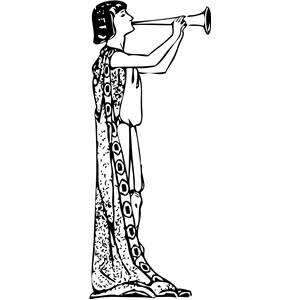 We have looked at several types of street evangelism, and found them all to be lacking in both effectiveness and Christlikeness.
We have looked at several types of street evangelism, and found them all to be lacking in both effectiveness and Christlikeness.
So how to most street evangelists justify their actions?
Information in the Age of Jesus
Most of those who engage in street preaching find justification for it in the pages of Scripture. They notice that Jesus, Paul, and others would go into the busy streets and marketplaces of towns and cities, and proclaim the good news of the Kingdom of God and eternal life. And this is true. Such methods were used.
But what few people realize today is that such a method of spreading news was commonly practiced in the first century Roman Empire. They didn’t have printing presses, newspapers, or even a postal system. So when merchants, or philosophers, or government officials wanted to spread the news about something, they would send out a herald or an emissary to stand in a busy area of town, or walk through the streets, shouting the news. This is how announcements and messages were spread back then.
Information in the Age of Today
 It is not how announcements and news are spread today. Today, we use books, blogs, newspapers, social networking sites, television, radio, and email. The only people today who shout anything on the street corners are vendors and performers. And sadly, this is how most people view street evangelists: as someone who is trying to sell something or put on an amusing show.
It is not how announcements and news are spread today. Today, we use books, blogs, newspapers, social networking sites, television, radio, and email. The only people today who shout anything on the street corners are vendors and performers. And sadly, this is how most people view street evangelists: as someone who is trying to sell something or put on an amusing show.
There was one method, however, that was used in the days of Jesus and the Apostles, and which is still in use today: mass gatherings in civic centers and coliseums.
Since Jesus gathered large crowds, and Peter and Paul also spoke to large assemblies of people, and since similar methods are used today for political, entertainment, and sporting events, some feel that evangelism can use similar strategies to reach thousands for Christ all at one time.
However, I am not so sure this is a good idea.
We will begin to look at Crusade Evangelism tomorrow.



Leave a Comment or Question